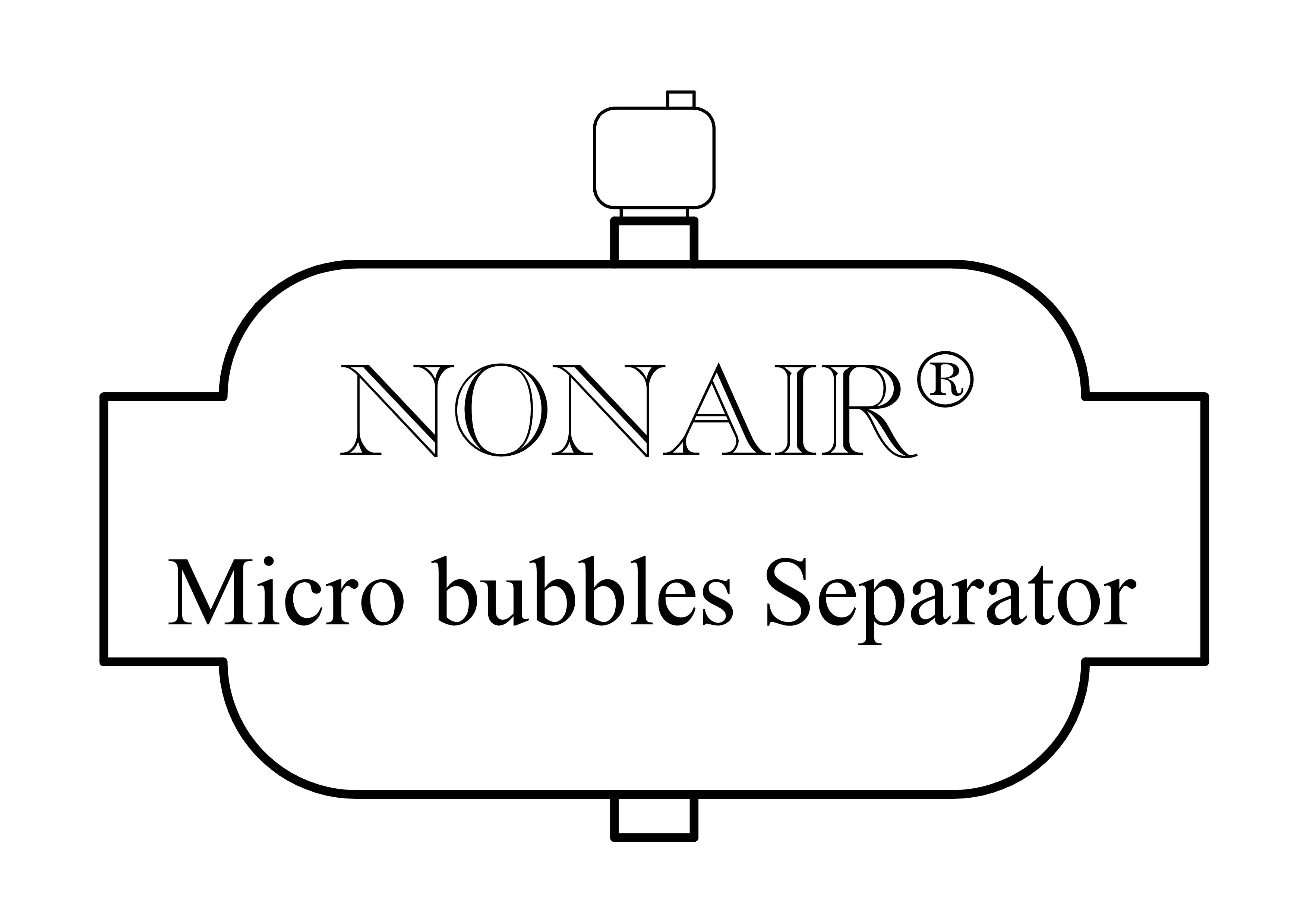Why a NONAIR®
NONAIR® separates air and other gases from circulating water in heating and chilled water systems.
NONAIR® is developed from a new and patented principle.
Traditional Separators are usually designed as vertical vessels with horizontal pipe connections. Inside it use to be a mesh or ”shaving brush” or metal rings on which surface the Micro bubbles will stick to, when the media flows in the Separator.
NONAIR® is designed as a horizontal vessel with horizontal pipe connections where a part of the flow is let in to a separation chamber. The Micro bubbles can, due to the turbulence free conditions gather together and finally be separated.
The advantages we use to call attention to are listed below:
- NONAIR® has a documented high efficiency of Micro bubbles separation.
- NONAIR® has a very low weight, both empty and filled with media. As we use Stainless Steel 316L we can reduce the thickness and thanks to that the weight will be reduced. For example, a NONAIR® in DN125 weighs only about 20% of a traditional Separator and filled with media less than twice the weight of a connection pipe with the same length. This will minimize the cost for transportation all the way from the manufacturing plant to the site. Well on site the cost of handling the unit and for suspension attachments will be lower.
- NONAIR® has a low or insignificant pressure drop as it has full flow through. This is because there is nothing along the flow line that creates pressure drop; no mesh, no ”shaving brush”, no metal rings. Traditional separators can have a pressure drops of several thousand Pa at a flow rate of 1 m/s. This will bring the energy consumption up to unnecessarily high levels. The use of NONAIR®, with a pressure drop of only 50 Pa at a flow rate if 1 m/s, will reduce the need of pump capacity and cost for pump energy.
- NONAIR® has the markets most extensive connection alternatives:
- Male threads for R25, R40 and R50*
- Female threads for R20 – R50*
- Welding ends in Stainless Steel 316L for DN40 – DN400*
- Welding ends in Carbon Steel for DN50 – DN400*
- Flange connection with collars in Stainless Steel in 316L and swivel flanges in Silumin or Galvanized Steel or Stainless Steel for DN40 – DN400*
- Flange connection with Welding neck flanges in Stainless Steel or Carbon Steel or even ASTM standard for DN40 – DN400*
- Grooved pipe ends in Carbon Steel for use with grooved connections like Victualic, Grinnell or similar for DN50 – DN400*
*the Strainer model has a dimension range DN50 – DN150. For flanges and Stainless Steel weld ends even DN40 – DN150.
- NONAIR® has no risk for inside corrosion due to its Stainless Steel material. For Separators made of Carbon Steel this risk is obvious. The separated air will be found in the top of the Separator waiting for to be let out through the Air-vent. If the material is corrosive the separator will get corroded in the zone where separated air is present.
- NONAIR® has no risk for outside corrosion due to its Stainless Steel material. For Separators made of Carbon Steel this risk is obvious, particularly when the media temperature is low and condensation occurs. Even if the equipment is insulated there will always be leaks that will let humid air in.
- NONAIR® has no general limitation for the flow rate.
- NONAIR® is designed as a horizontal vessel with little extension outside the centerline. This means that NONAIR® could in most cases be mounted in-line without the need of expensive tubing to get the Separator to the same level as the pipe route.
- NONAIR® is designed to be supplied with a detachable automatic Air-vent. With built in ones it is necessary to empty a great deal of the system if maintenance is needed with the Air-vent. With the NONAIR® this work is easily done.
- NONAIR® has as standard a design pressure of 10 bar but can on request be manufactured even for 16 bar and 25 bar for DN40 – DN400*
*the Strainer model stops at DN150.
